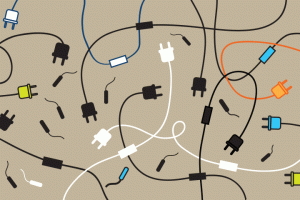Introduction: In this activity, the students will be introduced to the fascinating world of extremophiles. The students will brainstorm questions and research these unique organisms. In the following lesson, students will be presented with a real life example of an event that affected the Great Salt Lake ecosystem, the building of a causeway. Based on […]
Instructional Activities Assessment Messages Settings Instructional Activities: As a pre-module homework assignment, you can have students access this short article on new techniques to measure brain activity. This article specifically discusses brain neurology as a system and the need for novel ways to “see” into it. Taken from August 2011 HHMI Bulletin, vol. 24, No.3 […]
Introduction: More The students will be presented with a real life example of an event that affected the Great Salt Lake ecosystem – the building of a causeway. Based on observations of this phenomenon, students will generate hypotheses about factors affecting the growth of one prominent organism in this ecosystem, Halobacterium. They will then think […]
Simply put, systems biology is the study of an organism as a whole rather than as a sum of its parts. Instead of analyzing individual components or aspects of the organism, such as sugar metabolism or a cell nucleus, systems biologists simultaneously study all the components and the interactions among them, all as part of one system.
In this module, students complete the steps scientists take when using systems biology to investigate how organisms induce phenotypic changes in response to the environment. Student teams apply their background knowledge of genetics and networks to experiment with a model organism.
Advance preparation and materials required for each lesson: Lesson Description Preparation and materials Lesson 1 Building cell phone network manually on paper Lesson 1 Prep.doc Lesson 2 Cytoscape analysis of cell phone network Lesson 2 Prep.doc
To foster understanding of systems, students first work with a familiar example – a cell phone network. Students manually build a schematic of a cell phone network within the class and learn how the complexity of networks makes their analysis very difficult to perform by hand.
Recent advances in experimental practice, technology development, accompanying computational techniques and systems thinking have advanced biological inquiry. However, the practice of today´s biology does not resemble how biology is taught in today´s high schools. As a potential solution to this mismatch, the Baliga Laboratory at the Institute for Systems Biology is using today’s STEM (science, […]
Advance preparation and materials required for each lesson: Lesson Description Preparation and materials Lesson 1 Building cell phone network manually on paper Lesson 1 Prep.doc Lesson 2 Cytoscape analysis of cell phone network Lesson 2 Prep.doc Lesson 3 Researching background on extremophiles Lesson 3 Prep.doc Lesson 4 Introduction to the GSL case study; hypothesis generation […]
This 2 week curriculum module gives middle and high school students an introduction to 1) the concept of systems (aka networks), 2) using software tools to analyze networks, and 3) using both experimentation and networks as a way to define hypotheses and test outcomes.



